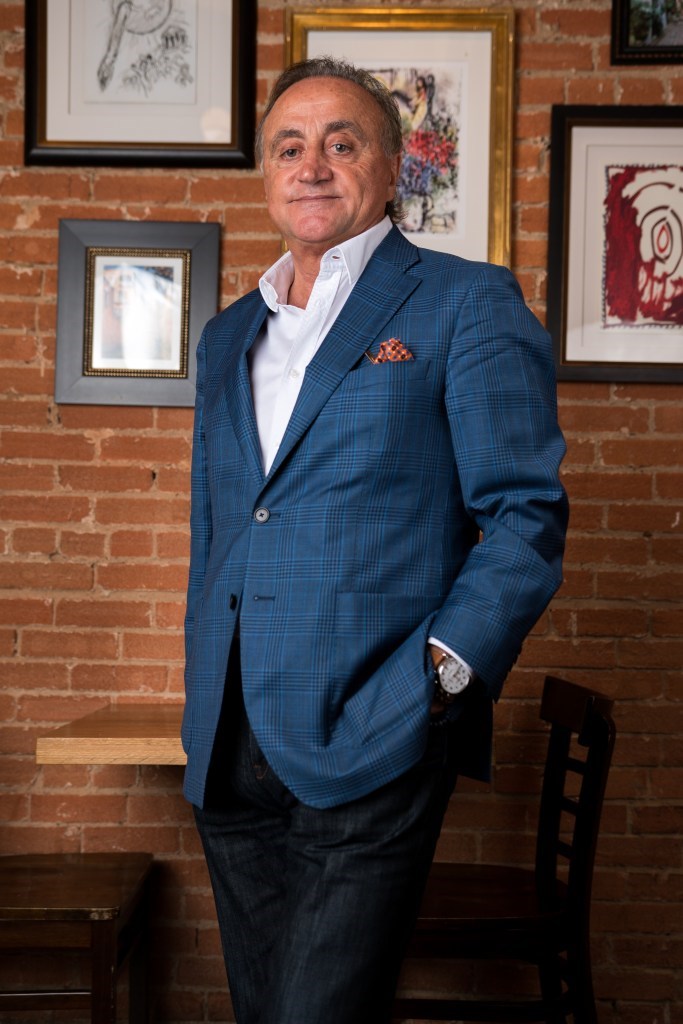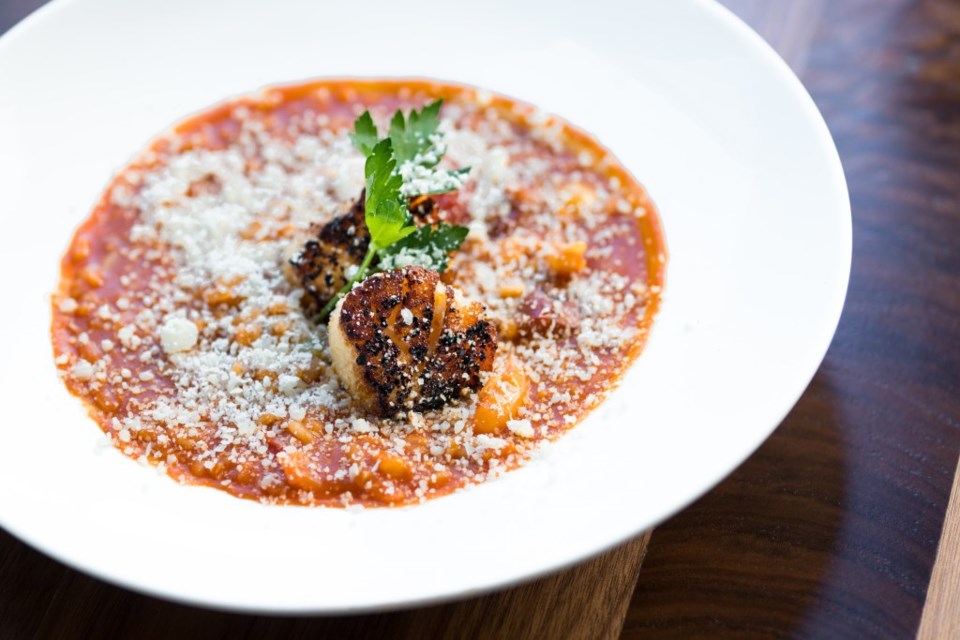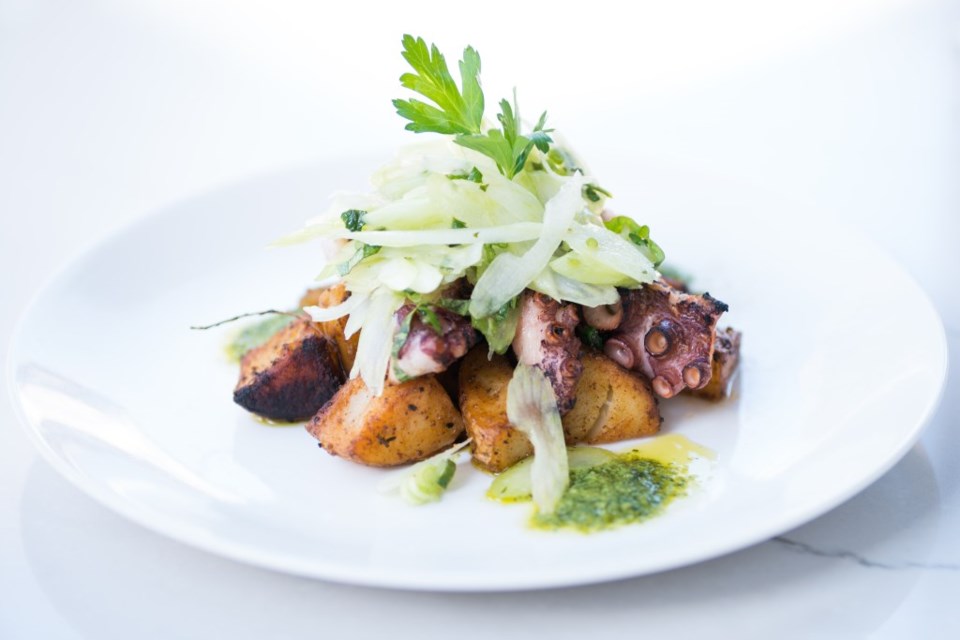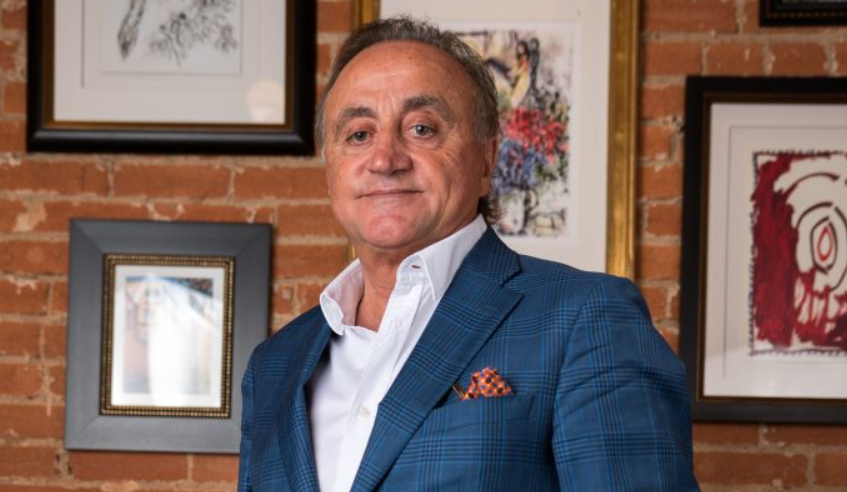
“My life philosophy has always been, ‘How to die broke’,” Alberto laughs. “Meaning … You enjoy life today.”
He left Italy at 16 “and a half.” Working at hotels and restaurants, he meandered across Europe, “just to adventure”; six months in Germany, three years in Belgium and half a year in Norway. He then set sail with Norwegian Cruise Lines and worked for three years on round-the-world cruises.
Aboard the luxury cruise line, he earned extra money playing poker. “It’s in my blood,” he says. He spent the money on explorations every time the ship docked. “I would disappear … I would check into the best hotels,” he says.
He still loves to travel. When we meet he’s just returned from a trip to California, the following day he’s jetting out to Las Vegas, “to visit a restaurant I haven’t been to in a year … I want to check it’s still there,” he laughs. “I can do that because we still have the same fantastic team, same manager, same chef for 17 years.”
It was 1972 and Alberto was 24 when he arrived in the States. “I jumped the ship in Miami,” he says. His travels took him to San Francisco and then to Dallas, where he became maître d’ of the Venetian Room at the Fairmont Hotel.
“I had always been the kind of guy that thinks of myself, but then I had a kid, my first daughter. I say, ‘My God, I need to open a restaurant, but I have no money.’” Despite more than 40 years in the U.S., his speech has retained that hypnotizing sing-song Italian rhythm.
One night, on his way home from the Venetian Room he met Arch Pardue, the landlord of a struggling restaurant called Jeremiah. “And I said, ‘Why don’t you give it to me? How much money you have?’ He had $27,000 and I only had $7,000. So, I borrowed $20,000 for one day, put it in the bank to show him and the next day I give it back.”
He borrowed that money from a friend of his wife, a hairdresser. He later enlisted the help of his colleagues at the Fairmont: an electrician, a carpenter, a lawyer, and an accountant to get the restaurant up and running. He even got a consignment of wine from a good friend. “They say, ‘Alberto, don’t worry. When you make money, you pay us.’”
Read more: Taverna at Legacy West
By December of 1977, Lombardi’s made it into D Magazine’s coveted “Recommended Restaurants” directory. “The lasagna (the lightest version imaginable) and the saltimbocca are standouts–maybe the best in town,” reads the listing. “Everyone is eager to please at Lombardi’s; the service is sophisticated and responsive.”
It wasn’t long before he decided to expand. “After four or five months … I decided I needed to open another restaurant, so I opened a French bistro, Le Rendezvous.”

Within the following decade, he opened another eight restaurants in Dallas. Each one as successful as the last. In a story published by D Magazine in 1987, a new Lombardi concept won high praise: “Lombardi Expresso wins the ultimate restaurant reviewer’s compliment; it’s a place I’ve returned to on my own time and money,” Liz Logan wrote.
Today, Alberto Lombardi, 69, isn’t exactly sure how many restaurants he has opened over the years. “35, maybe 36,” he says. Currently he has 18: two in Houston; three in Austin; one in Fort Worth, Atlanta, Las Vegas, and Laguna, California; one in Mexico; five in Dallas; and now three in Plano.
We meet for lunch at Taverna in Legacy West. It’s opening week, and the place is packed. Every table is full and there are huddles of people at the bar. A beautiful terrace—lit with strings of bulbs, adorned with chic striped chairs and a faux-turf floor—wraps around two sides of the restaurant. Today, one of the coldest days of the year, the terrace is enclosed and warmed with gas heaters.
We sit at a table in the middle of the restaurant. As soon as I sit down, a mini-hat stand appears and Alberto helps me out of my coat, deftly hanging it up with a flick of the wrist. He’s wearing a tailored grey blazer with a pocket square and a thin black scarf, the kind designed for style rather than warmth. He peers at me with big round eyes, “What you want? You like octopus? A glass of wine?” He’s disappointed when I order an Arnold Palmer because I eventually need to go back to work.
“Italians, we do work over lunch,” he says. “The office is impersonal. We talk about family, we eat, we drink and at the end, if we like each other, we shake hands.” He orders a Sauvignon Blanc.
Between courses, Alberto jumps up out of his seat and dashes across the restaurant to charm his customers. As soon as someone sits down, he hops up to welcome them and introduce himself. When someone is putting on their coat to leave, he’s there to ask if they enjoyed their meal, to bid them farewell, and say that he hopes to see them again soon.
“I was talking to a couple over there, first time here. They say, ‘You look familiar.’ I say, ‘I used to have Lombardi.’ They tell me, ‘Lombardi was our favorite restaurant!’ There are a lot of people like this,” he says.
“The reason I stay in business for so long is because we have the same customers,” he smiles. “I see the same people at Taverna, at Toulouse. I see them with their kids or grandkids at Penne Pomodoro. I see them when they dress up at Bistro 31. It’s the same clientele.”
According to Alberto, the reason he has loyal customers is the service—not the food.
It’s the foundation to his entire restaurant empire.
“The most important thing in the service industry business is service. More than the food. Food has to be good. But if the restaurant is personalized, meaning when you come in, everybody knows you … not only knows you … they know what you drink, which waiter you like and this and that,” he flicks both hands and two beaded bracelets jangle on his wrist.
At all Lombardi restaurants, the customer is what counts. It’s true at Taverna Akumal in Mexico and it’s true at the new Taverna in Legacy West.
“[Taverna] Legacy West is a small restaurant, it’s sophisticated. We have fresh pasta, cooked al dente. We have Fiorentina steak, fish-on-salt, octopus,” he says.

I try the Charred Spanish Octopus. Sitting atop delicately roasted purple potatoes and drizzled with lemon oil and salsa verde, it’s the most tender octopus I’ve ever had.
Also now open right across the street in Toulouse. While fans of Toulouse on Knox Street should get excited, Alberto emphasizes that they are not the same. “It’s more like a brasserie, like in Paris, with a beautiful patio, onion soup, all the classics and seafood,” he says. There’s even be a raw bar “serving all different types of shellfish.”
Read more: Feeling very French at Toulouse Cafe and Bar, Legacy West
Opening later this month (September 2018) is KĀI, Lombardi’s first full Asian concept, located directly above Toulouse. With a huge terrace, space for a DJ and live music as well as a robata, KĀI promises to be unlike any other previous Lombardi restaurant.
“They’ll be sushi, sashimi, duck, more Japanese cuisine than anything else. I want to put Peking Duck because I love it … That one goes for sure,” he says with a smile.
As we tuck into dessert—a glorious tiramisu topped with a fine sheet of white chocolate—Alberto mentions that the new chef for KĀI is arriving that afternoon. Chef Richard Chen earned a Michelin Star at his previous post at the Wynn Las Vegas. Alberto will spend the next week working with him on the menu.
As I stand to leave, Alberto leaps to his feet, grabs my hands and wraps me in a warm embrace. The maître d’ gives me a friendly wave, our server, a charming lad from Albania, hands me my coat with a warm smile.
From 1977 through 2017 and beyond, Lombardi thrives on his unwavering philosophy, “service is most important, number one.”
Story originally published in the March 2018 edition of Plano Profile.




